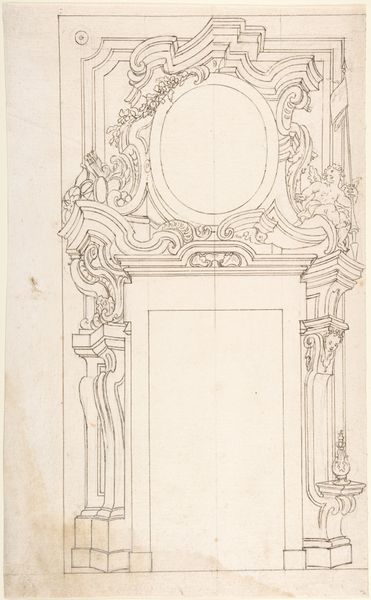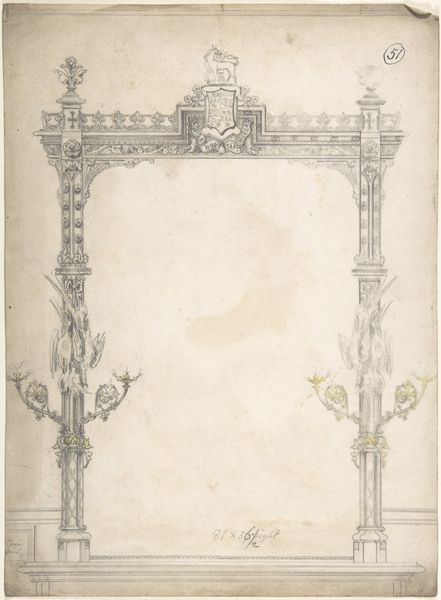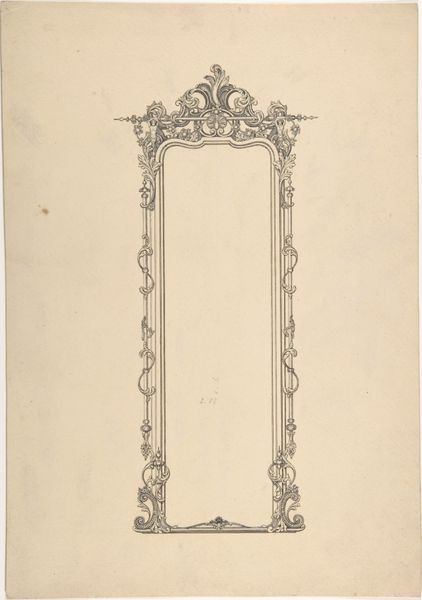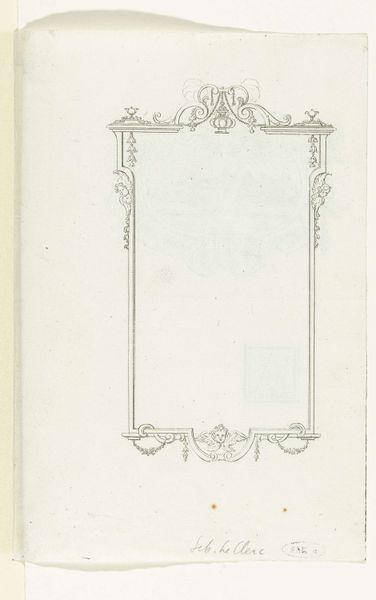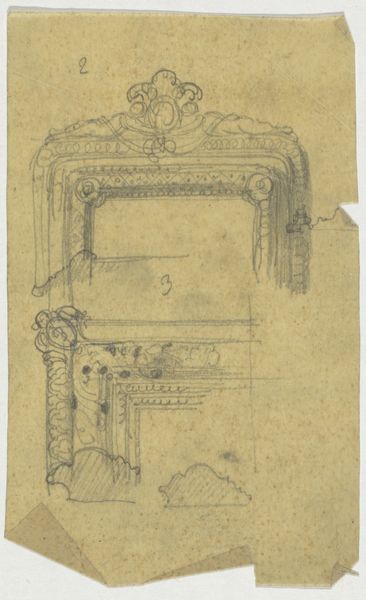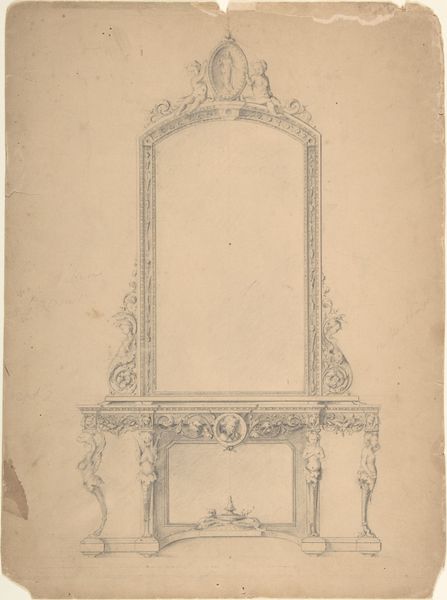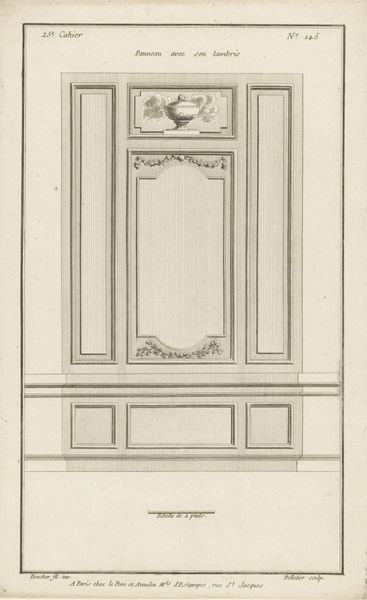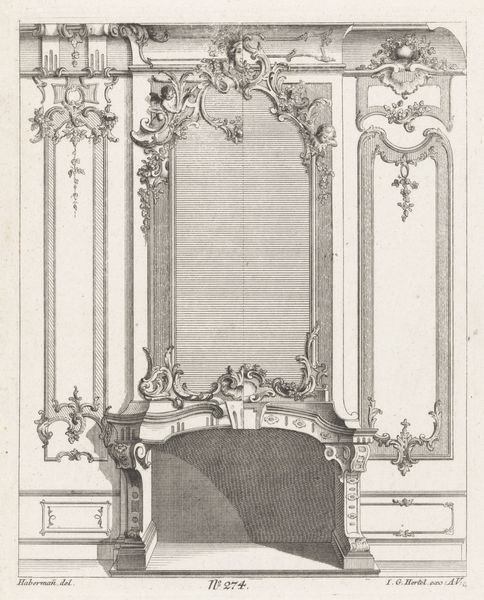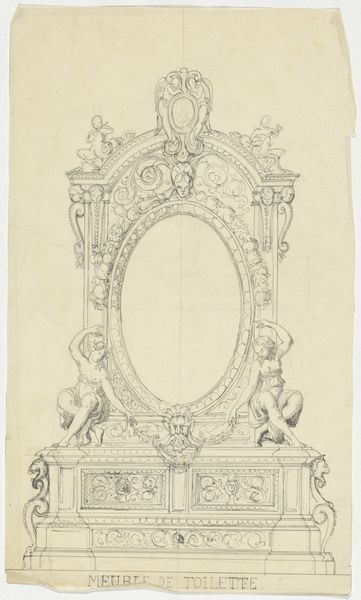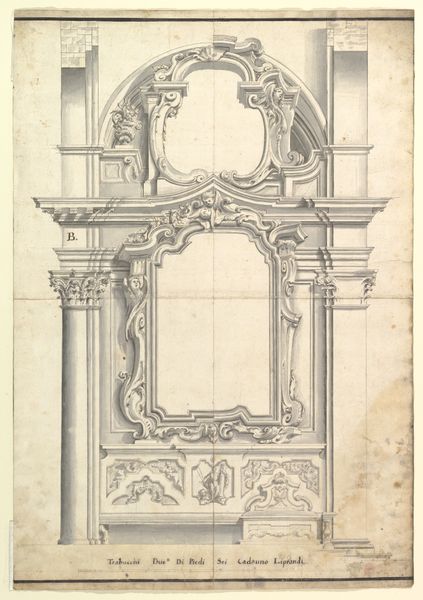
Dimensions: 205 mm (height) x 135 mm (width) (bladmaal)
Editor: Here we have H.C. Henneberg's "Ornamental indramning i gotisk stil," created sometime between 1826 and 1893. It looks like a drawing, perhaps pencil or pen, styled in a gothic fashion. It's quite intricate. What draws your eye when you look at this piece? Curator: My interest immediately goes to the means of production and the social context in which this piece was likely created. Notice the intricate linework suggesting either a woodcut or a meticulous drawing mimicking that style. How does this aesthetic borrow from the traditions and material conditions of both printmaking and the more individual act of drawing? Editor: That’s interesting. I hadn’t considered the social implications of the medium itself. How does that intersect with its "gothic style"? Curator: Think about the Gothic period and its architecture, where ornament served as didactic tool, but also showcased craftsmanship. Here, Henneberg seems to be echoing that value of intricate labor, but potentially within a changing economic landscape. Was this intended as a design for mass production? Is it a comment on the value of craft versus industrial production during the artist’s time? The layering of reference is suggestive of complex, sometimes contradictory values. Editor: So, it’s not just a stylistic choice, but also a reflection on the changing value of handcraftsmanship during industrialization. Curator: Precisely. It provokes questions about artistic labor, the intended audience, and the evolving relationship between art, craft, and industry. The materiality of the print – the type of paper used, the quality of the ink – also becomes evidence in this reading. Editor: That definitely gives me a lot to think about. I’m seeing so much more now than just the "gothic style." Thanks for pointing out how materials and context reshape our understanding. Curator: Indeed, every artwork contains not just visual elements but is evidence of choices rooted in labor and economic and social considerations. Always interrogate what the piece is *made* of, as well as what it *depicts*.
Comments
No comments
Be the first to comment and join the conversation on the ultimate creative platform.

